The wish to travel seems to me characteristically human: the desire to move, to satisfy your curiosity or ease your fears, to change the circumstances of your life, to be a stranger, to make a friend, to experience an exotic landscape, to risk the unknown. - Paul Theroux
15 September 2019, Abomey
Complexe 5th Dimension 4,000XOF (R100)
If ever there was a symbol of power, this must be it. Mounting the skull of a rival king on a carved handle, topping it with the tail of the vanquished king’s horse, and using it as a fly swat.
Today we visited two of 12 royal palaces (most now in ruins) in Abomey, capital of the Dahomey Kingdom which thrived from 1600 to 1900 when the 12th king* was exiled by the French. The line of kings has continued into the 21st century, with the most recent king crowned in January 2019, but kings no longer head a kingdom, Benin now being a republic, and though still important, have no real power.
Each king had his own palace; each replaced the former king only on his death; each had a symbol that epitomised his reign, such as a lion or a buffalo. Dahomey was a kingdom of the Fon, a tribe who practised voodoo**, a religion still dominant in Benin today.
Expansion was the name of the game; through conquest and subjugation, Dahomey grew into a sizeable kingdom with Abomey its capital. A 10km adobe wall and a moat protected the palaces and surrounding villages, with several gates the only access points.
We were not allowed to take photographs inside the two palaces we visited, that of Ghézo and Glélé. Neither palace was elaborate, both comprising outer, inner and private courtyards, with single-storey adobe buildings that used to be topped with thatch, now with tin. There were waiting rooms, and reception rooms, and residences, and a voodoo temple in each. The most notable feature was the bas reliefs, multi-hued using natural dyes, depicting weapons, scenes of war, and royal symbols. The two palaces are Unesco world heritage sites*** and make up the Abomey Historical Museum.
In the museum were the thrones of the kings, including one mounted on the skulls of his enemies. The thrones were modest, carved from wood without back or arm-rests, but attractive. Also in the museum were the kings’ “asen” or altars. These were made from iron and bronze and were essentially a staff with a series of statues clustered on the top, the images symbolising the kings. One was topped with a chameleon, for example. It represented a king who had come late to the throne, but who claimed that slow and steady would get him to the top of the tree. More than one altar depicted a calabash, symbol of voodooism; and one a cross, showing that it was under that particular king that Christianity first came to Dahomey. My favourite showed an urn with many holes in it. To protect the kingdom, people would need to put their fingers in the holes, making it thus the symbol of unity. Each altar was dedicated to the deceased. Today, even commoners create altars to their dead, which are stored in the home, and offerings made at family gatherings to the ancestors they represent.
Also loved a large appliqued umbrella used to shade and fan the king. Our guide let us stand under it while he twirled it and we were surprised at how much of a breeze the hanging triangles of fabric created. It was twirled always anti-clockwise, the symbolise prosperity.
Some interesting snippets gleaned from our excellent guide, Victorian:
- Women warriors, named Amazons by western observers, fought alongside men to expand the kingdom. They were praised even by those they fought, and apparently had a penchant for beheadings.
- The earlier kings mixed the blood from human sacrifices, slaves and captured enemy soldiers, with mud to build their temples; later kings used the blood of cattle.
- Kings are believed to travel in the afterlife. 41 of 100 wives of a former king chose to travel with him. They were drugged, then buried alive.
*There were, in fact, 14 kings during the Dahomey era, but two were effectively written out of history. One reigned for 21 years, but was dispossessed by his brother; the other was a woman who found the task so onerous, she resigned after three years.
**learnreligions.com: Vodou (or Voodoo) is a monotheistic religion that is often misunderstood. … Popular culture has strongly associated Vodou with devil worship, torture, cannibalism, and malevolent magical workings. This is largely the product of Hollywood coupled with historical misrepresentations and misunderstandings of the faith. … Vodou is a monotheistic religion. Followers of Vodou - known as Vodouisants - believe in a single, supreme godhead … This deity is known as Bondye, "the good god". Vodouisants also accept the existence of lesser beings, which they call loa or lwa. These are more intimately involved in day-to-day life … The relationship between humans and lwa is a reciprocal one. Believers provide food and other items that appeal to the lwa in exchange for their assistance. The lwa are frequently invited to possess a believer during ritual so the community can directly interact with them. Vilokan is the home of the lwa as well as the deceased. It is commonly described as a submerged and forested island. It is guarded by the lwa Legba, who must be appeased before practitioners can speak to any other Vilokan resident. … There is no standardized dogma within Vodou. Two temples within the same city might teach different mythologies and appeal to the lwa in different ways … A variety of animals might be killed during a Vodou ritual, depending upon the lwa being addressed. It provides spiritual sustenance for the lwa, while the flesh of the animal is then cooked and eaten by participants.
***unesco.org: The Royal Palaces of Abomey are the major material testimony to the Kingdom of Dahomey which developed from the mid-17th century in accordance with the precept enunciated by its founder, Wegbaja, “that the kingdom shall always be made greater”. Under the twelve kings who succeeded from 1625 to 1900, the kingdom established itself as one of the most powerful of the western coast of Africa. The site of the Royal Palaces of Abomey covers an area of 47 ha…
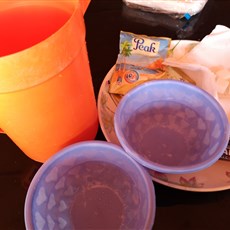
Coffee at 5th Dimension
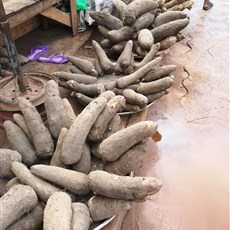
Abomey - cassava
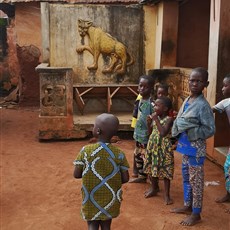
Abomey
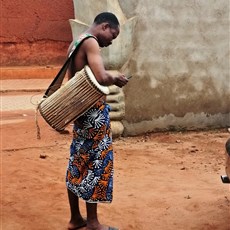
Abomey
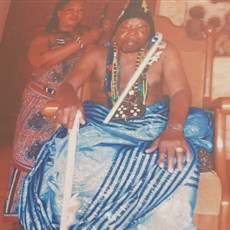
Abomey - current king
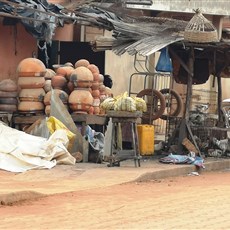
Abomey - dogs for sale
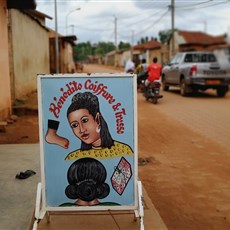
Abomey
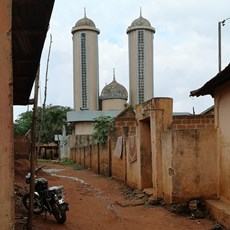
Abomey
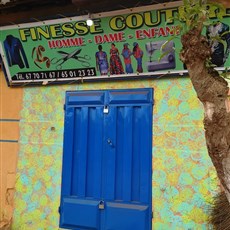
Abomey
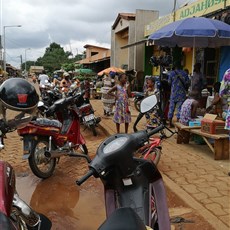
Abomey

Abomey
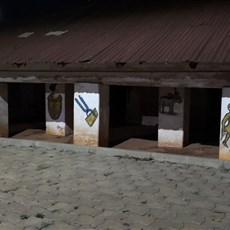
Abomey